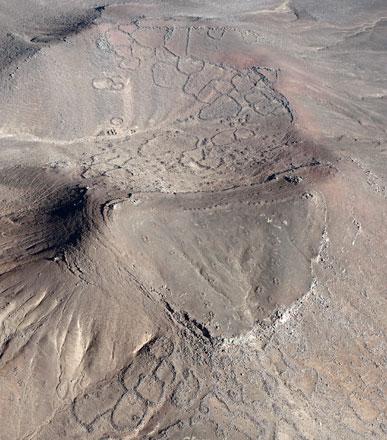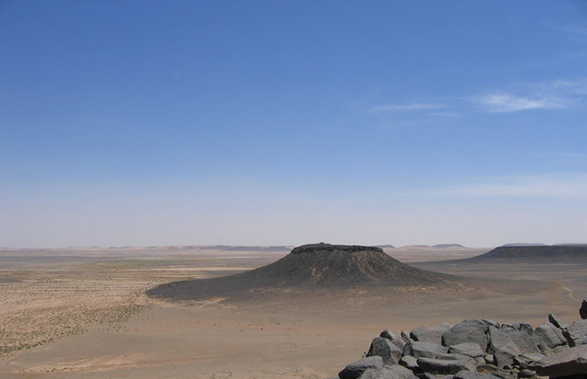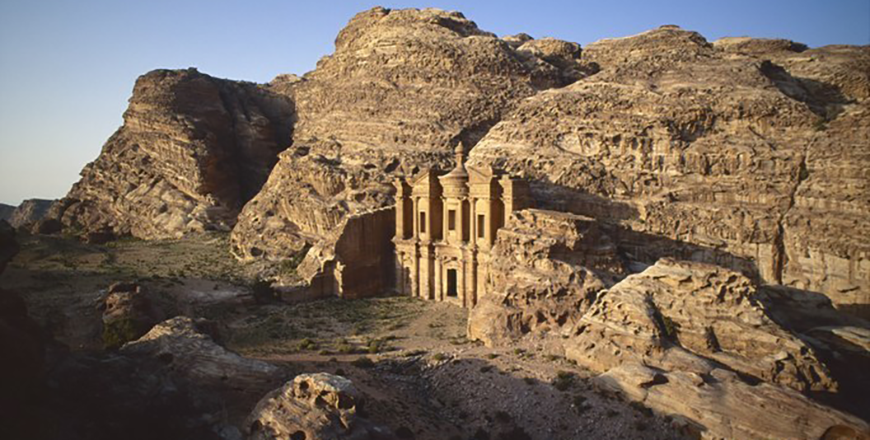You are here
Scholar examines ancient irrigation technologies of Black Desert sites
By Saeb Rawashdeh - Oct 16,2019 - Last updated at Oct 16,2019

Aerial view of Tulul Al Ghusayn (Photo courtesy of APAAME)
AMMAN — The irrigation system in the terraced gardens of the Black Desert, according to scholars, was probably the outcome of an indigenous (basalt desert) technology, which was also discovered at the earlier sites like Tulul Al Ghusayn, Khirbet Al Jabariya and Khirbet Abu Al Husayn, said a German archaeologist.
“It is characterised by a full dependence on local surface run-off, which means precipitation fell directly on the gardens and on nearby elevations and slopes from which it was collected and transported via long canals into the terraced gardens,” said Bernd Mueller-Neuhof from the German Archaeological Institute, Berlin.
With this system, it was possible to enlarge the area for water collection, he added.
Mueller-Neuhof has worked for years in the Eastern Desert, but has not explored the fortification system at Jawa, a site some 60 kilometres east of Azraq.
In the future, the scholar and his team plan to continue excavations at Jawa and focus on the development of a detailed chronological sequence, he said.
“We have no idea yet about the organisation of the construction and maintenance of these gardens, or about their ownership,” the archaeologist stressed.
Excavation and radiocarbon dating at the nearby Thulul Al Gusayn have assigned it to a period slightly earlier than Jawa, around the first half of the 4th millennium BC, and “probably overlapping with the earliest phase at Jawa”, Mueller-Neuhof explained.
The gardens at the site were irrigated with surface run-off, and even though the catchment area at Tulul Al Ghusayn was smaller than the one at Jawa, “it worked”, noted Mueller-Neuhof.
“Khirbet Al Jabariya is also a fortified site like Tulul Al Ghusayn and Jawa. Radiocarbon measurements from the single-room dwellings at Khirbet Al Jabariya date the dwellings to the late 5th millennium, so it is older than Jawa,” the archaeologist said.
The fortification, he added, appears to be much more advanced than the Tulul Al Ghusayn fortification.
“Unfortunately, we have no clear date yet from the Khirbet Al Jabariya fortification, but my assumption is still that it dates into the late 5th or early 4th millennium BC,” Mueller-Neuhof said.
Terraced gardens also exist at Khirbet Al Jabariya and are located close to the foot of the slopes, consisting of a single line of gardens, he stated.
Hydrological features such as sluices and overflows could also be detected here, as in Jawa and Tulul Al Ghusayn, the archaeologist said.
In the future, the plan is to concentrate on the Jawa gardens within the framework of a multi-disciplinary project involving archaeologists, hydrologists, sedimentologists and specialists for terraced agriculture, Mueller-Neuhof explained, adding that within this project, they will also carry out specific explorations in the garden areas of the other sites.
Related Articles
AMMAN — Fortifications and the oldest known dam in the world built around 3,600BC are the main characteristics of Jawa,a site 60km nor
AMMAN — Archaeological research teams recently discovered several prehistoric forts on the hilltops located in the basalt desert and limesto
AMMAN — Located in the mountainous and very arid region of the southern Jordan, Petra was not a populated place until the 4th century BC, wh



















